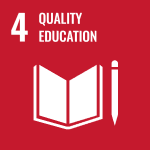Document Type
Article
Publication Date
7-2007
Keywords
Java Intelligent Tutoring System, JITS, Java programming, programming students
Abstract
The Java Intelligent Tutoring System (JITS) was designed and developed to support the growing trend of Java programming around the world. JITS is an advanced web-based personalized tutoring system that is unique in several ways. Most programming Intelligent Tutoring Systems require the teacher to author problems with corresponding solutions. JITS, on the other hand, requires the teacher to supply only the problem and problem specification. JITS rigorously analyzes the student’s submitted code, determines the intent of the student, and intelligently guides the student towards a potentially unique solution to the programming problem. JITS is intended to be used by beginner programming students in their first year of College or University. This article discusses the process by which the design and development of JITS took place. JITS has been and is currently being field-tested at the Sheridan Institute of Technology and Advanced Learning.
Faculty
Faculty of Applied Science & Technology
School
School of Applied Computing
Journal
Journal of Interactive Learning Research
Version
Publisher's version
Peer Reviewed/Refereed Publication
yes
Terms of Use
Terms of Use for Works posted in SOURCE.
Copyright
© 2007 AACE (Association for the Advancement of Computing in Education)
Creative Commons License

This work is licensed under a Creative Commons Attribution-Noncommercial-No Derivative Works 4.0 License.
Original Publication Citation
Sykes, E. R. (2007). Developmental process model for the Java Intelligent Tutoring System. Journal of Interactive Learning Research, 18(3), 399-410.
SOURCE Citation
Sykes, Edward R., "Developmental Process Model for the Java Intelligent Tutoring System." (2007). Faculty Publications and Scholarship. 9.
https://source.sheridancollege.ca/fast_appl_publ/9





Comments
Reprinted with permission of the publisher.
Copyright by AACE. Reprinted from the Journal of Interactive Learning Research, 2007 with permission of AACE (http://www.aace.org).